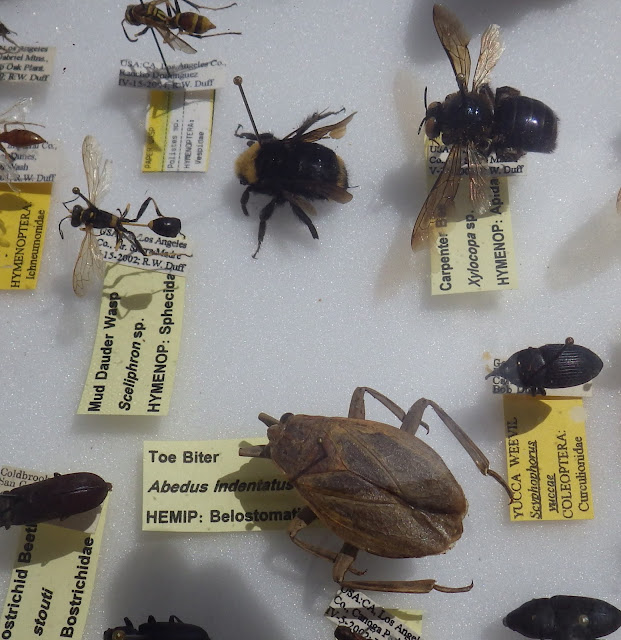"You're going to California!" my friend exclaims. "What for?"
"A pollinator festival", I reply.
"Is that a thing? she asks.
"Yes it is, or is should be a thing." I say.
What does a pollinator festival look like? Well, it can take as many forms as there are venues, so I wanted to share images from the Bee and Butterfly Festival created by the library in Center Valley California. First of all, you need a leader, someone who has vision, creativity, energy and a huge heart. Laura Zuckerman, the library's director was the festival's leader and motivator.
Crafts! A pollinator festival needs drop-in family friendly crafts that are also eco-friendly. Loretta works with the youth at the library and she graciously drove me around to the schools where I worked with budding farmers and potential bee gardeners.
Costumes! You can't have a festival without pollinator costumes. Keep a stock of them on hand for the special occasion.
Crafty beekeepers!
Local gardening support! The Master Gardeners created a beautiful display and shared helpful gardening tips and resources.
And of course giving away and/or selling seeds and plants is one of the most important parts of a pollinator festival. Bees gotta eat and you need to plant something for them to tuck into. In California that means planting bee plants that bloom all year round!!!!!
Getting a local lavender farm involved is also a bonus, especially when it is a lovely ORGANIC farm tucked away in the hills with a pool and luxury glamping tents. You should go!
Food trucks are a fantastic addition to a pollinator festival. (The scones were especially delicious.)
And in SoCal, there's gonna be honey. The dark, rich winter honey infused by All Natural Soaps comes from eucalyptus and avocado trees.
Many of the beekeepers are also displaying mason bee homes. Haven't you heard? Bee hotels are the new bird houses! The more beekeepers learn about native bees, the better they will understand the impact that keeping non-native bees has on their local bee population.
I had some fantastic conversations with Tracy Ellis, an ag scientist for the County of San Diego and Leah Taylor from the UC San Diego--lots of food for thought.
It's great to have a load of local specimens so folks can see the amazing biodiversity of insects in the local flora.
And beeeeeeeees!!!!! Ya gotta have bees! Many of these specimens were collected by an awesome bee scientist named James Hung. Check out his website here!
This is also amazing--having the plant specimen surrounded by the associated insect visitors.
Did you know there's a water bug called a toe biter? Yikes!
I was really hoping to see a live large carpenter bee (Xylocopa). However this specimen, shown by Annika Nabors, was as close as I came to one!
What a great idea for the face painting station! Point at the picture and you get what you asked for.
Quizzes! There was also a festival passport which children got stamped at every station to receive a prize.
The local ecologists had a lovely table. (Note the mug on the left--the hermit of hellhole canyon--mythical or real dude?)
The Master Gardeners also had a fantastic butterfly gardening display.
Duuuude! That's who's wearing the mysterious bee costume.
And introducing Carlotta the Cuckoo Bumble Bee!
There's also a nature trail with signage just adjacent to the library.
And this is where I was able to take a photo of a sweet little native bee, ending the festival on a personal high! Thanks to everyone who made this event possible. Long live the Valley Bees!
For those people who want more fantastic resources for gardening for bees in California I have three additional book recommendations (aside from my book Victory Gardens for Bees):
California Bees and Blooms: A Guide for Gardeners and Naturalist by Gordon
W. Frankie, Robbin W. Thorp, Rollin E. Coville, and Barbara Ertter
Field Guide to the Common Bees of California: Including Bees of the Western United States by Gretchen LeBuhn





















































